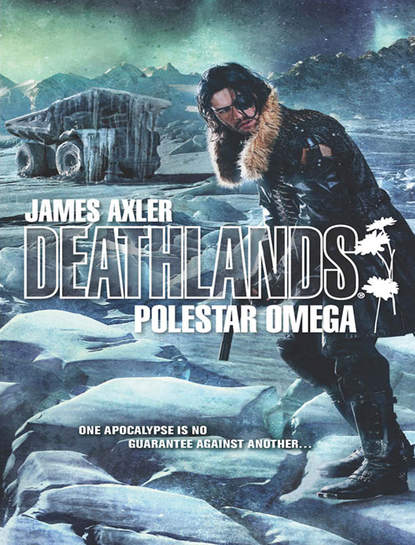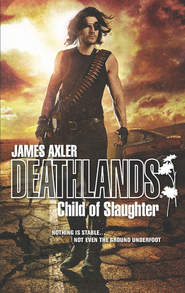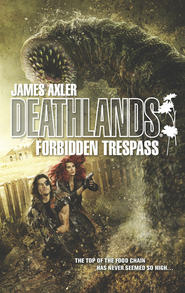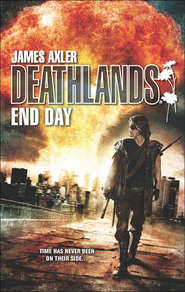По всем вопросам обращайтесь на: info@litportal.ru
(©) 2003-2024.
✖
Polestar Omega
Настройки чтения
Размер шрифта
Высота строк
Поля
Chapter Seven (#litres_trial_promo)
Chapter Eight (#litres_trial_promo)
Chapter Nine (#litres_trial_promo)
Chapter Ten (#litres_trial_promo)
Chapter Eleven (#litres_trial_promo)
Chapter Twelve (#litres_trial_promo)
Chapter Thirteen (#litres_trial_promo)
Chapter Fourteen (#litres_trial_promo)
Chapter Fifteen (#litres_trial_promo)
Chapter Sixteen (#litres_trial_promo)
Chapter Seventeen (#litres_trial_promo)
Chapter Eighteen (#litres_trial_promo)
Chapter Nineteen (#litres_trial_promo)
Chapter Twenty (#litres_trial_promo)
Chapter Twenty-One (#litres_trial_promo)
Chapter Twenty-Two (#litres_trial_promo)
Chapter Twenty-Three (#litres_trial_promo)
Chapter Twenty-Four (#litres_trial_promo)
Copyright (#litres_trial_promo)
Prologue (#ulink_e8ad1945-031c-53f6-913f-c345d9803676)
A tremendous blast of wind swatted the nose of the hovertruck earthward, throwing Adam Charlie hard against his seat harness. For an awful second he hung suspended by the webbing, staring down at nothing but white, edge-to-edge across the aircraft’s windshield. With a roar of the front turboprops, the computer-assisted autogiro corrected, lifting the nose, leveling the flight path and leaving Adam’s stomach dangling somewhere down around his boot tops.
Groans and complaints from the other crewmen poured through his earphones.
“That gust was over one hundred miles an hour,” their pilot, William Yankee, said. “Sorry, but there was no way to compensate for that kind of headwind.”
The lesser gusts made the hovertruck buffet, veer and dip, which in turn made their progress along the landward edge of the Ross Ice Sheet seem halting and fitful, but that was an illusion. Below a bright blue, cloudless sky, an unbroken expanse of frozen sea steadily unrolled before Adam’s eyes. Without his coldsuit’s polarized faceplate, the glare off the ice would have been blinding. Even so, he had to squint to pick out the shadow cast by the glacier cliffs four miles to his right. Distance made them look much smaller than they were. They stretched on and on, all the way to the curve of the horizon.
Adam thumbed the button at the jawline of the coldsuit, activating his throat mike. “How far to target, George?” he said.
“Getting a strong bounce back from the tracker,” the man seated behind him replied. “Target is stationary and coming up fast. We should have visual contact at one o’clock any second now.”
The hovertruck’s cab, a clear blister perched on the top of the fuselage, provided an unobstructed three-hundred-sixty-degree field of view. The craft’s shape reminded Adam of a bottom-dwelling fish, with bulging eyes set too high and too close together on its skull. The cab quarters were cramped, as if passengers were an afterthought. Six crew including the pilot sat two abreast, knees brushing seat backs, elbows touching. In their flame-orange coldsuits with tight, head-conforming hoods and faceplates that sported black, molded noses and mouths, they looked like a clutch of gaudy insects ready to hatch out. Horizontal ribbing protected the suits’ heating elements and sensors; insulated boots and gauntlets were built-in.
“Give us some altitude,” Adam told his pilot. “Overfly the target. Let’s see what we’ve got.”
The hovertruck climbed jerkily to a thousand feet and then angled sharply eastward. William held course against the blasts of side wind and tipped the nose down slightly, giving everyone a look at what lay below.
The erratic bounce of the hovertruck made the recon challenging. Their target was tucked in the lee of a broad, sweeping curve of white cliff. At first it looked like a section of dirty glacier had calved off onto the plain of sea ice. As they drew closer, Adam caught the telltale clockwise movement—like a whirlpool, or a hurricane seen from space—and then he saw the mass of rhythmically bobbing reddish-gray heads and bodies.
“Would you look at all that pengie pie,” George said.
“Whoa, that’s one big-ass flock,” William said. “Gee, maybe we should radio for some backup?”
It was the pilot’s feeble attempt at a joke. There was no backup. This job was on them, and them alone.
On the ice below, hundreds of animals tramped around and around in an ever-shifting circle, flowing steadily in and out of the calm eye of the storm, taking turns in the warmest spot until they were pushed out.
Adam remembered the last time he’d seen so many pengies in one place. That fiasco—not just a resounding defeat, but a clusterfuck of blood and death—was burned into his memory. In the five years since, escalating culls of both breeders and eggs had caused the animals’ stocks to plummet. The problem was complex: a growing human population at Polestar Omega, the collapse of other Antarctic food stocks and an accompanying, dramatic reduction in pengies’ birth and survival rates. Key elements of the polar ecosystem were in flux, and the changes seemed to be accelerating.
“Let’s not get them stirred up,” Adam told the pilot. “Land a hundred yards downwind. We can move the aircraft closer after we harvest.”
The hovertruck landed with a crunch, its skid feet crushing into the uneven surface of the ice sheet.
“We can’t just barge in with guns blazing,” Adam said as they unbuckled their seat harnesses. “They won’t be cowed by a frontal assault when they see how few we are. And they won’t scatter, either. When they realize what’s happening, they will counterattack. We have to separate the animals we want from the edge of the flock, slaughter them and keep the rest at bay while we move the truck into position and load it. That means no solo action this time. We stay together, ready to defend and, if necessary, to retreat to the truck with covering fire. If we let ourselves get swallowed up by that mob, we’re done for, and you know what that means—it won’t be quick and it won’t be pretty.”
No one said anything. They knew he was speaking the truth.
“Let’s saddle up,” Adam said.
Brad Lee rose from the cab’s rear left seat, opened the floor hatch and lowered the gangway to the cargo deck. One by one the others got up and followed him down. Adam was the last to step off the ladder. A coat of thick frost twinkled on the deck plates, the winch and the cargo netting strung along the empty hold’s walls. As they strapped crampons to their boot soles and shrugged into their combat harnesses, screaming wind slammed the flank of the aircraft again and again, making it shudder.
Adam opened the weapons locker and started passing out the 7.62 mm H&K autorifles, 40-round magazines loaded with Hydra-Shok ammo, and handfuls of the flash-bang grenades critical to the successful completion of the harvest. Once pengie blood began to flow, retaliation by the rest of the flock was a given. The hovertruck could carry only six tons of cargo, and fresh meat was too valuable to waste. They couldn’t afford to kill animals in self-defense that then had to be abandoned to the elements. Flash-bangs would leave the pengies unconscious, disoriented, but alive—breeders and meat on webbed feet for future harvests.
Adam Charlie slid open the cargo deck’s side door and hopped out. The sensor on his wrist cuff said the air temp was -28°C, not counting wind chill. He took the lead and they set off single file across the ice sheet, weapons shoulder slung, barrels pointing downward to keep out the blowing ice. The footing was treacherous, both slick and jagged, and advancing against the wind gusts and accompanying blasts of ice pellets was a constant effort, like wading through a powerful, swirling river current.
Despite the sustained exertion, he experienced no buildup of body heat. He and the others could thermoregulate just like the pengies. Not due to natural adaptation acquired over many millions of years—the density of feathers and blubber, blood chemistry and hormonal secretions—but because of their coldsuits’ embedded microsensors, onboard microcomputer and breathable, superinsulating polymer fabric.
Step by trudging step, they closed to within fifty yards of the target. Over the shrieking wind, Adam’s suit mike picked up sounds echoing off the face of the towering white cliff—a rising, falling chorus of sharp metal scraping against sharp metal. The pengies were vocalizing as they wheeled around and around. The tramp of their feet was a steady vibration he could feel through the points of his crampons and into his boot soles. As he slogged toward the cliff, the sound and the sensation increased.
Adam got no real impression of the pengies’ individual size until the distance was cut by half and he faced row upon countless row of rusty gray backs. These were massive creatures: the males six-foot-five and 350 pounds; the females only slightly smaller at six-foot-two and 300 pounds. Compact and powerfully muscled, both sexes sported ten-inch-long black beaks with slightly downcurved tips. In close quarters one female could outfight a dozen unarmed men.
As harvesters of fat and protein, and efficient depositories of the same, they were remarkable biomechanisms, which is why their species had been resurrected from thirty-four million years of extinction, DNA salvaged from frozen, fossilized bones, cloned and genetically tweaked. The effort to recreate them had begun more than a hundred years ago, well before skydark. Supremely designed for the polar environment, the reintroduced pengies were a new top predator, able to displace the previous top dogs: leopard seals, killer whales and great white sharks. In the sea they were agile and quick; by attacking in coordinated packs they could disembowel a much larger enemy in seconds. They were much slower and more awkward on land and genetically programmed to congregate there for breeding and egg laying, which was the idea behind bringing the species back in the first place—let the pengies harvest the frigid, deadly sea, then easily and safely harvest them whenever needed.
Hunting parties from Polestar Omega used to be able to land right next to the flocks, but that hadn’t been the case for over fifty years. What two generations ago was routine protein gathering had become dangerous duty. Pengies weren’t stupid. Their brains were almost human-sized. They had learned from experience to scatter for the escape tunnels beneath the ice field that led to the sea, or if they had sufficient numbers, to do exactly what they did in the sea: to envelop and destroy the threat.
Adam stopped his squad thirty feet from the edge of the circling mass of bodies, autorifles shouldered and ready to fire. Hundreds of pairs of huge, taloned feet shuffled and slapped the ice, friction heat in combination with free-flowing urine and excrement turning it into vile gray slush. As they danced past, thick layers of blubber rippling over dense muscle and bone, the pengies craned heads over steeply sloping shoulders to glare down at the party crashers. The look in their red eyes said they were not afraid of anything that swam, ran or flew, that they would kill and die to protect eggs the size of small boulders tenderly balanced on the tops of their wide feet.
As he opened his mouth to give the command to attack, Adam hesitated, his heart pounding under his chin. They were dwarfed, overmatched and outnumbered. The pengies didn’t have arms that could punch or legs that could kick, they had no hands to hold weapons, but their bulk could absorb many bullets before they went down, and with 350 pounds driving their beaks, they could punch through sheet metal as if it were cardboard. He had seen firsthand and in close quarters what the wrath of these animals looked like, and he knew he was about to initiate an uncontrollable, conceivably disastrous chain of events.











